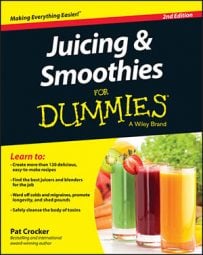You think you’re making a healthy choice by slurping up that healthy-sounding, creamy drink from a fast-food outlet or popular smoothie bar. If the drink has low-fat milk or fresh juice, fresh fruit, and ice, you can likely go ahead and enjoy.
But if it’s made from ice cream, powdered cream, sugars (glucose, fructose, corn syrup, or molasses), or any other of the high-calorie ingredients, you may be in for a shock at the calories and chemicals that are lurking in that iced refresher.
On average, depending on the outlet, 16 ounces of a commercial smoothie drink contains 260 to 320 calories. If you know the ingredients are fresh and not processed and if you’re replacing a dinner with a high-protein smoothie, the higher calories may not impact your daily intake in a negative way. The point is to know exactly what goes into your drink and how to make it work as part of your daily calorie intake.
It’s true that you can add all sorts of high-calorie or high-fat ingredients to homemade smoothies, but you’re still in control of the quality of the organic fruits and vegetables (as opposed to it being a frozen pulp with additives); you can opt for low-fat dairy ingredients; and you can be sure that the juice is fresh, not containing filtered water or extra sweeteners.
Bottom line: Homemade smoothies beat out commercial blends hands down.

